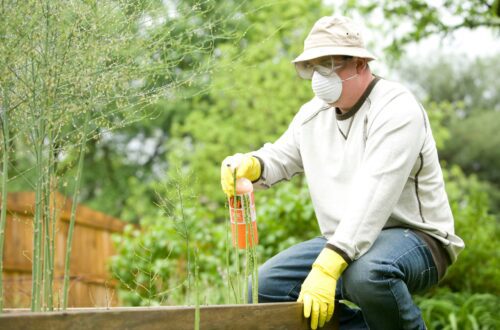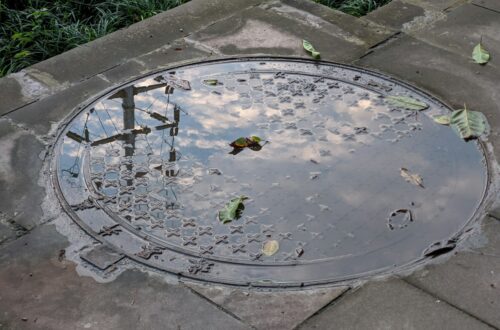Upcycling is all the rage these days, and for good reason. Not only is it environmentally friendly, but it can also add a unique touch to your landscaping projects and save you money on materials.
There are a number of upcycled materials you can use in your landscaping projects, from recycled glass to upcycled metal. And with a little creativity, you can use these materials to create an innovative and stylish landscape design you’ll love for years to come.
Saving Money Landscaping by Upcycling
When you start a project, where do you usually turn for supplies? Big box stores like Home Depot and Lowe’s are great resources, but they’re not always going to give you the best prices. To save money while landscaping, turn instead to local community resources such as online classifieds and “Buy Nothing” trade groups. These are places to see what other people are getting rid of so you can snatch up the materials at a lower price (or free!) for your own project.
Tips for Saving Money Via Upcycling
What, specifically, could you look for to save money when landscaping your yard? You might want to put the bulk of your budget toward healthy, native plants, and scrimp a little on other aspects of your yard. Here are some tips for saving money via upcycling.
- Source coffee grounds from a coffee shop to add to your compost
- Check with your city for free mulch that’s created when trees have to be trimmed or removed from city streets
- Ask local businesses if you can have their wooden pallets or cardboard to use in your garden
- Salvage scraps from construction projects such as wood, metal, or PVC that can be used in your hardscaping
- Pick up surplus sod from another gardener’s project for use on your own
While it can be tempting to get soil for free or at a discount from a neighbor, there’s no guarantee that it’s good quality. It might be worth investing in soil that’s free from pesticides and weeds and instead upcycle hardscaping products such as stone or lumber.
You may not classify it as upcycling, but getting plant cuttings from your community is another way to save money when landscaping. Whether you have friends and neighbors to share plants with or you join a community group hosted by a local nursery, it’s a great way to grow your garden and your relationships with others.
Tips for Using Salvaged Materials in Landscaping
Once you’ve laid out a thorough plan for your yard, how can you use salvaged materials to bring everything to life? Here are some tips for using salvaged materials in your landscaping projects:
- Use recycled glass bottles as planters. Drill a hole in the bottom of the bottle and fill it with soil and plants.
- Create a focal point by upcycling an old piece of furniture or metal into a garden sculpture – think old bicycles, tractors, or wheelbarrows.
- Use upcycled metal to create unique planters or trellises. Got a cast iron, clawfoot tub that leaks? Fill it with soil and plants in the yard and you have a beautiful, quirky planter.
- Give your garden a rustic look by using upcycled wooden pallets as fencing or raised beds for vegetable and flower gardens.
Upcycling is a great way to add personality to your landscaping projects while being kind to the environment.
Using Materials You Already Have On Hand
In addition to turning salvaged trash into treasure, you can also consider relocating perfectly good material from one part of your property to another. Take, for example, historic brick or other masonry work.
If you have a crumbling wall on your property, look at other ways you can use the materials in your landscaping. Can the historic bricks or stones be used to make pathways through the garden? What about using the materials to create a patio or outdoor fireplace? Instead of discarding something that’s no longer working for you, think outside the box and put it to work in your hardscaping.
Is a shed pergola part of your landscaping design? Put salvaged wood to work! Cottonwood Landscapes incorporates different hardscaping in their designs, including decks, storage buildings, and shade structures. You may find you already have some of the necessary materials on hand to put together one of these popular hardscaping elements many homeowners want.
Relocating Plants
As tempting as it may be to dig up all your plants and start fresh, it can save you money to relocate what you already have. If possible, use as much of your existing vegetation throughout your yard, especially if you already have native plants that are thriving. Here are some tips for transplanting:
- Transplant in cooler seasons such as Spring and Autumn
- Hydrate the plant prior to moving it
- Dig the new hole for the plant before you uproot it from its existing spot
- Prune the plant before transplanting
- Give a 3- to 10-inch berth around the stem and root ball of the plant when you dig it out
- Water the plant thoroughly once it’s transplanted
- Add fertilizer and compost to the plant in its new spot
Recycling Landscaping Materials
When it comes to recycling, landscaping materials are some of the most versatile. In fact, there are businesses dedicated to collecting and selling aggregate materials for use in residential and commercial projects. For example, Asphalt Materials located in Utah invites customers to recycle surplus materials or those that they’re excavating from their yards. From asphalt to rocks, it’s a great way to keep items out of landfills and give them a chance to be used in someone else’s project.
Be sure to check online for businesses in your area that either offer pickup or allow customers to drop off recyclable materials when done with a landscaping project. You can also browse their products to see if you can find the perfect mulch, stones, or sand to incorporate into your landscaping design at a fraction of the cost of buying new.
No matter what approach you take to upcycling, whether it’s relocating existing plants in your yard or sourcing materials from another project, it can pay off in both savings and style.






